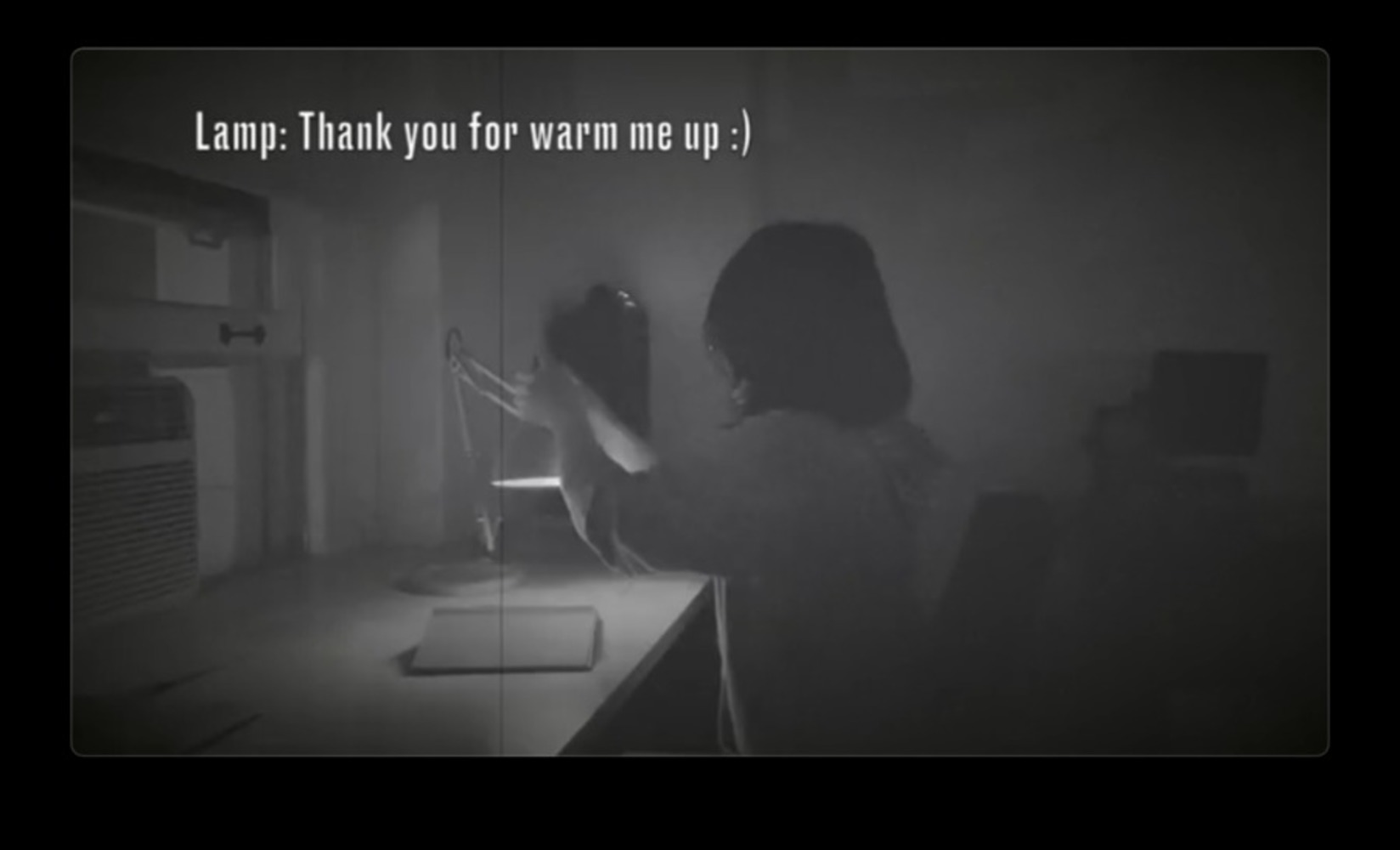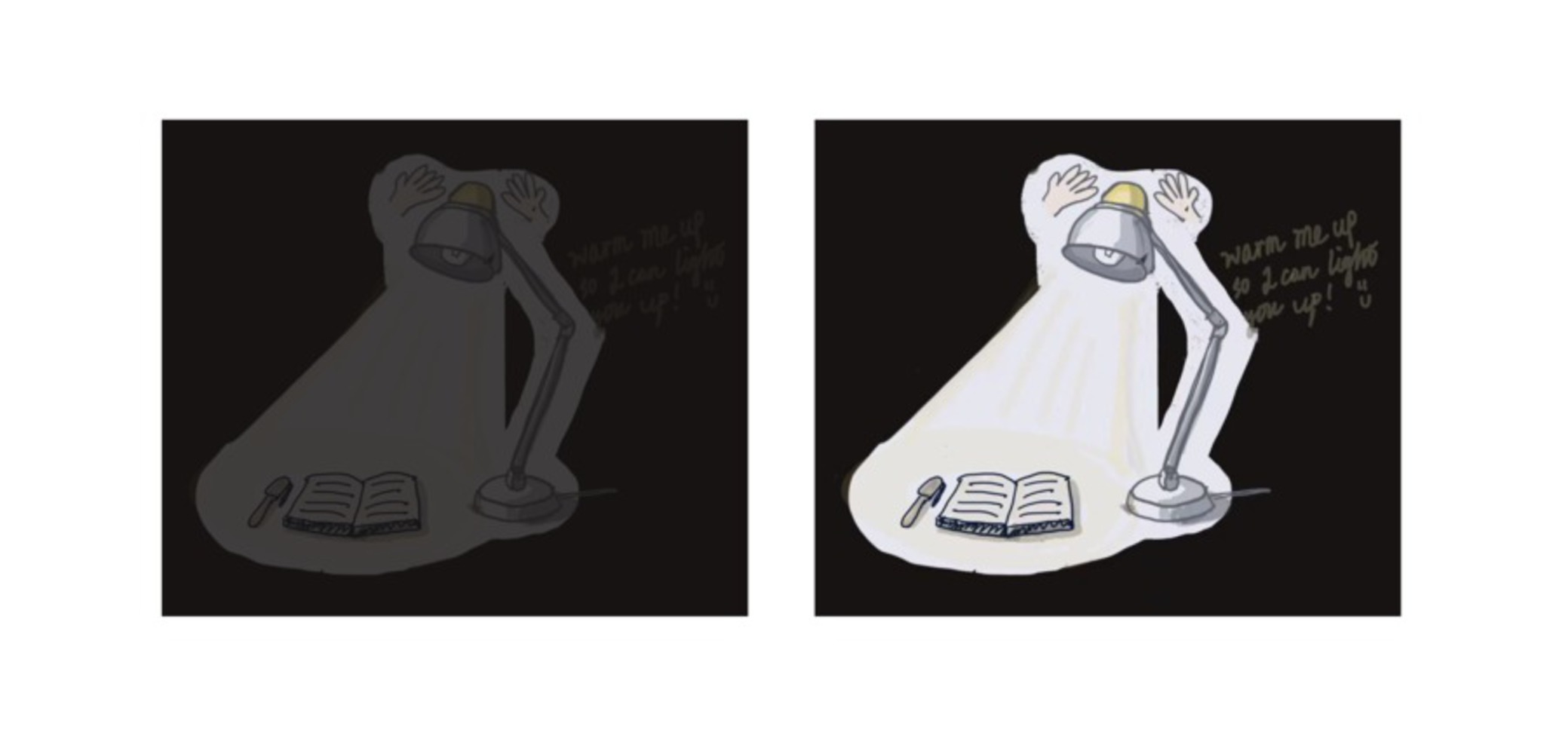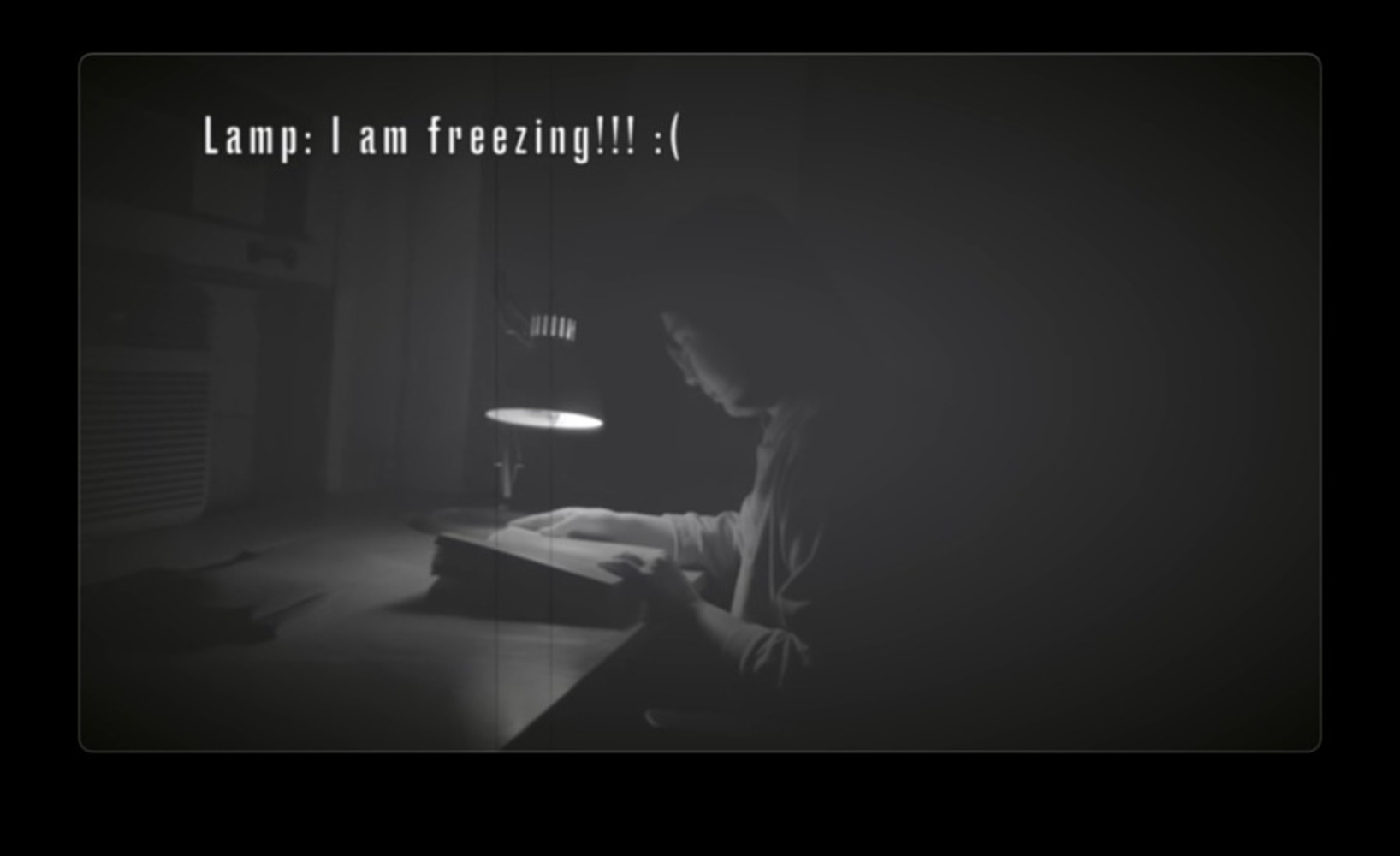Intention
The spirits in the lamp is a project that we created to make people have more intentional, mindful encounters with home electronic devices. Unlike the normal lamp, our lamp does not have an on/off button. It requires people to hold it and warm it up with human body heat in order to turn it on, as if it's saying "Please warm me! I'm feeling cold right now." It will also dim little by little, urging people to heat it again. As we realized the interactions between human and those objects are too absolute, like pushing a switch button, and the light is on, pushing a button and then the toast is done, etc. We want to alter the relationship between people and those products by creating poetic interactions between people and everyday objects. In this way, people will see everyday objects with a different lens and not take this subject-object relationship for granted. Looking closer to the current environment we're living in. Actually, behind those conveniences we're enjoying, there is a huge infrastructure system that's supporting our current convenient life which most of the people on this planet are not privileged to enjoy. We created "the spirit in the lamp" also to inform people about the privilege they are enjoying, which is often neglected.


